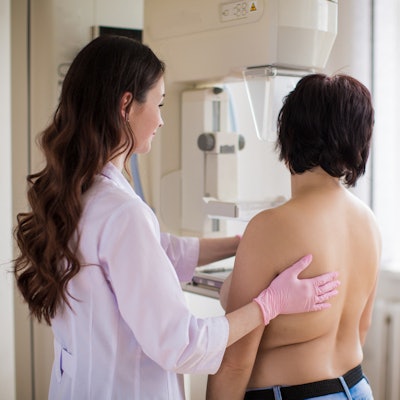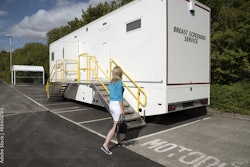
Mobile mammography clinics appear to be effective at boosting underserved women's access to screening, according to a study published online November 15 in Preventing Chronic Disease.
That being said, there's work to be done to further improve mobile mammography screening, perhaps by offering patient navigation services, wrote a team led by Suzanne Vang, PhD, from Icahn School of Medicine at Mount Sinai in New York City.
"[Our findings] suggest that mobile mammography programs do reach underserved women," the researchers wrote. "Most women using mobile mammography lacked insurance and were from racial/ethnic minority backgrounds ... and low-income households."
"Adding patient navigation to mobile mammography programs may help improve screening mammography completion and promote further evaluation of any resulting abnormal mammograms," they concluded.
Vang's team conducted a literature review of studies published between January 2010 and March 2018 that explored the efficacy of mobile mammography programs, using the search terms "mobile health unit," "mammogram," "mammography," and "breast cancer screening." Ten studies qualified for review; the researchers analyzed each of these in terms of purpose, research design, data collection, population targeted, location, sample size, outcomes, predictors, analytical methods, and findings.
Four of the 10 studies compared mobile mammography users with users of fixed units, and six focused on mobile mammography users only. From the studies, the researchers found the following:
- Mobile mammography users were more likely than users at fixed sites to be uninsured, have incomes below $25,000, and to be African-American or Latina.
- They were less likely to adhere to other screening guidelines (such as regular ovarian cancer screening) or to have seen a primary care provider in the past year.
- Mobile mammography users had low compliance with one-year (12%-34%) and two-year (40%-48%) screening guidelines.
- The most common barriers to screening mobile mammography reported by users were fear of the cost of the exam, fear of mammogram-associated pain, and fear of bad news.
- Mobile mammography users had higher recall rates (16%) than those who attended fixed sites (13%).
- Mobile mammography clinics described barriers to care such as patient retention, patient follow-up of abnormal or inconclusive findings, and women inaccurately perceiving their breast cancer risk.
The study findings suggest that although mobile mammography clinics are reaching underserved women, they could still be improved, Vang and colleagues concluded.
"Programs to promote screening should be delivered in a culturally congruent manner, and risk assessments should account for a woman's racial/ethnic background," they wrote. "Efforts are needed to educate communities about the quality of mobile mammography, the importance of follow-up, and individual breast cancer risk. Future research should focus on understanding why many women do not return to mobile mammography clinics after their initial visit."




















